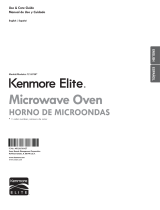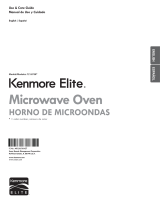• This microwave oven is UL listed for
installation over electric and gas ranges.
• This microwave oven is not approved or
tested for marine use.
• Read and follow the specific precautions
in the Precautions to Avoid Possible Exposure
to Excessive Microwave Energy section on
page 2.
• This appliance must be grounded. Connect
only to properly grounded outlet. See the
Grounding Instructions section on page 7.
• Install or locate this appliance only in
accordance with the provided Installation
Instructions.
• Do not mount this appliance over a sink.
• This over-the-range oven was designed for
use over ranges no wider than 36.″ It may be
installed over both gas and electric cooking
equipment.
• Do not operate this appliance if it has a
damaged power cord or plug, if it is not
working properly or if it has been damaged
or dropped. If the power cord is damaged,
it must be replaced by General Electric
Service or an authorized service agent using
a power cord available from General Electric.
• Do not cover or block any openings on
the appliance.
• Use this appliance only for its intended use
as described in this manual. Do not use
corrosive chemicals or vapors in this
appliance. This microwave oven is specifically
designed to heat, dry or cook food, and is not
intended for laboratory or industrial use.
• Do not store this appliance outdoors.
Do not use this product near water—
for example, in a wet basement, near
a swimming pool, near a sink, or in similar
locations.
• Keep power cord away from heated surfaces.
• Do not immerse power cord or plug in water.
• To reduce the risk of fire in the oven cavity:
— Do not overcook food. Carefully attend
appliance when paper, plastic or other
combustible materials are placed inside
the oven while cooking.
— Remove wire twist-ties and metal handles
from paper or plastic containers before
placing them in the oven.
— Do not use the oven for storage purposes.
Do not leave paper products, cooking
utensils or food in the oven when not
in use.
— If materials inside oven ignite, keep the
oven door closed, turn the oven off and
disconnect the power cord, or shut off
power at the fuse or circuit breaker panel.
If the door is opened, the fire may spread.
— Do not use the Sensor Features twice
in succession on the same food portion.
If food is undercooked after the first
countdown, use TIME COOK for
additional cooking time.
• See door surface cleaning instructions in
the Care and Cleaning of the microwave oven
section of this manual.
• This appliance should be serviced only by
qualified service personnel. Contact nearest
authorized service facility for examination,
repair or adjustment.
• As with any appliance, close supervision is
necessary when used by children.
• Do not store anything directly on top of the
microwave oven surface when the microwave
oven is in operation.
3
IMPORTANT SAFETY INSTRUCTIONS
WARNING!
For your safety, the information in this manual must be followed to minimize the risk of fire
or explosion, electric shock, or to prevent property damage, personal injury, or loss of life.
SAFETY PRECAUTIONS
Use this appliance only for its intended purpose as described in this Owner’s Manual. When using
electrical appliances, basic safety precautions should be followed, including the following:





















